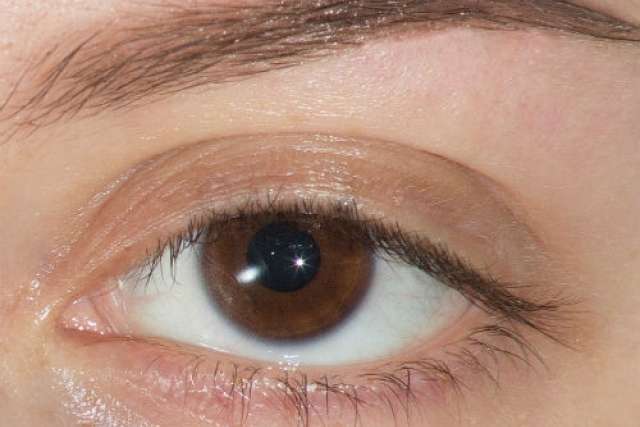Lots of people have bedroom eyes – a lazy, heavy-lidded gaze that conjures up seduction. But if you’re 50 or older and your lids remain half-closed when you open your eyes, you may be a candidate for surgery to correct ptosis (pron: toe-sis), or droopy upper eyelids.
Insurance often covers some of the cost of the procedure if the sagging of your eyelids significantly obstructs your vision.
At the UCLA Stein Eye Institute, surgeons evaluate every week about 10 patients with drooping eyelids, making ptosis one of the most common conditions that eye plastic surgeons treat.
“Ptosis happens gradually as we age,” explained Dr. Robert Goldberg, the institute’s chief of orbital and ophthalmic plastic surgery and Dabby Professor of Ophthalmology at the David Geffen School of Medicine at UCLA. “The condition most often results from stretching of the tendon that lifts the eyelid and keeps it open.”
The condition often sneaks up on people, who unconsciously find themselves compensating by raising their eyebrows or dropping their chins to lengthen their fields of vision. Ptosis patients often have tell-tale lines spreading horizontally across their foreheads as a result of all the eyebrow activity.
Corrective surgery is performed under local anesthetic in an outpatient setting, and requires about 30 minutes per eye, said Goldberg.
“We enter through the front or the back of the eyelid and tighten the tendon, much like hemming a pair of pants,” he said. “Excess skin also sometimes removed from the eyelid during the same procedure. Cosmetic work is not covered by insurance, he noted.

Doctors diagnose patients by examining and measuring the eye and testing eyelid muscle strength. If the eyelid covers so much of the eye that vision is blocked, surgery is considered medically necessary by some insurers.
“In some cases, ptosis interferes with a person’s ability to read or drive,” said Goldberg. “That’s when surgery can really enhance a patient’s quality of life.”
The average patient is 65 or older, and the condition is more common in contact-lens wearers. The reason for the latter is unclear, however, the lens-wearers’ daily manipulation of the eyelid to remove contacts may contribute to the problem.
People who suffer from dry eyes are typically not candidates for the procedure, which can exacerbate the condition.
“Dry eyes can be a side effect of the surgery,” explained Goldberg. “When the lid remains open, it exposes more of the eye to air and allows the tear film to evaporate. Mild cases can be resolved by the regular use of artificial tears.”
Patients can expect some bruising and swelling for seven to 10 days after the procedure, and are usually able to drive again after one or two days. Contact lenses can usually be tolerated a week after surgery.
For more information about ptosis surgery, please call the orbital and ophthalmic plastic surgery division at the UCLA Stein Eye Institute at (310) 206-8250.



